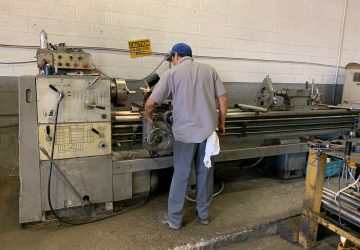Las Vegas Cylinder & Hydraulic Repair

Fast and reliable repairs from our full machine shop, backed up with a 120 day worry-free warranty.
Cylinders are an essential component in many machines and equipment, ranging from engines to hydraulic systems. As such, cylinder repair is an important aspect of maintaining and ensuring the longevity of these systems. In this article, we will discuss the various aspects of cylinder repair and how to ensure that your cylinders remain in good working condition.
The first step in cylinder repair is to identify the problem with the cylinder. This could be a leak, a crack, or damage to the piston or rod. Once the problem has been identified, the cylinder can be disassembled to assess the extent of the damage. It is important to inspect all parts of the cylinder, including the piston, rod, seals, and bearings.
If the damage is minor, it may be possible to repair the cylinder without having to replace any major components. For example, if the cylinder has a leak, the seals can be replaced to fix the problem. However, if the damage is more severe, it may be necessary to replace the piston or rod, or even the entire cylinder.
Before any repairs are made, it is important to clean and prepare the cylinder. This involves removing any dirt, debris, or old seals, and inspecting the cylinder for any signs of wear or damage. Once the cylinder has been cleaned and prepared, the repair process can begin.
One of the most important aspects of cylinder repair is ensuring that the repaired cylinder is properly aligned and balanced. This is particularly important for hydraulic cylinders, which rely on precise movement and alignment to function properly. To achieve proper alignment, the cylinder should be reassembled using precision tools and techniques.
In addition to proper alignment, it is also important to use the correct materials and techniques for cylinder repair. This may include using high-quality seals and bearings, as well as specialized welding techniques for repairing cracks or damage to the cylinder. It is important to work with a qualified and experienced technician who has the knowledge and expertise to perform cylinder repairs correctly.
After the cylinder has been repaired, it should be tested to ensure that it is functioning properly. This may involve testing the cylinder’s pressure, movement, and alignment, as well as checking for any leaks or other issues. If the cylinder passes all tests, it can be reinstalled and put back into service.
![1111-3[1]](https://silverstatehydraulic.com/wp-content/uploads/2023/03/1111-31-1-150x128.png)

